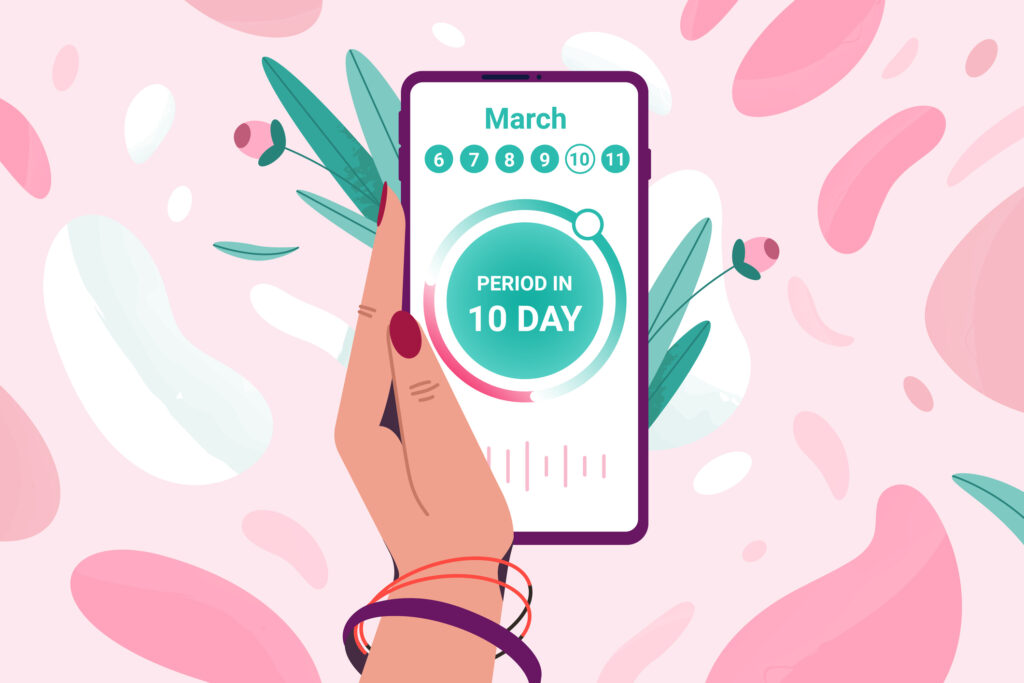‘You may experience acne and mood swings’ … ‘you may get a headache today’ …well, according to your menstrual tracking app, it’s almost that time (of the month) again!
Unfortunately, premenstrual syndrome (PMS) affects most women at some stage of their lives, with symptoms ranging from mild (75%) to severe (20%-30%). PMS encompasses a wide range of physical and emotional symptoms experienced in the lead up to a period, including:
- Acne
- Bloating
- Changed bowel habits
- Fluid retention
- Muscle or joint pain
- Poor sleep
- Fatigue
- Headaches and migraines
- Hot flushes
- Increased appetite and food cravings
- Anxiety
- Depression and low mood
- Difficulty concentrating
- Reduced self-esteem
- Irritability and anger
- Mood swings

If you, your patients or your loved ones experience any of these symptoms you likely know that PMS can negatively affect most aspects of your life, including interpersonal relationships, work performance, social activities and general wellbeing.
Luckily, there’s many practical strategies you can recommend to your patients (or try yourself) that will help to lessen the monthly woes.
Listen, stretch and tap away PMS
Have you ever experienced a more joyous mood while listening to your favourite pop song? You may not be alone; research suggests music medicine reduces PMS symptoms and improves quality of life. In this study, participants listened to 30-minute instrumental playlists three times per week in the 14 days before their period. After two months, the individuals assigned to the music group reported significantly less anxiety, fatigue, irritability and pain. Music to the ears of PMS sufferers!
Many natural medicine Practitioners already bang on about yoga, and PMS is another area where this ancient practice shines. In several randomised controlled trials (RCTs), regular yoga (3 x 60 minute sessions for 8-10 weeks) decreased symptoms of depression and improved sleep quality in those with PMS. Undoubtedly, some of the beneficial aspects of yoga are its stress soothing and nervous system supportive effects. Emotional freedom technique is another mind-body method, which involves tapping acupressure points around the body with your fingertips while focusing on an issue or feeling you’re hoping to resolve. In one recent study, emotional freedom technique was effective in ameliorating PMS-related fatigue, nervousness, depression and sleep problems. Let’s get tapping!
Soothing symptoms with supplements
Magnesium is often the first nutrient we think of for supporting women, and for good reason! Magnesium deficiency has been implicated in PMS, dysmenorrhoea, menstrual migraines and menopausal symptoms. Likewise, vitamin D insufficiency is linked with premenstrual aches and pains and breast tenderness. In a small RCT, vitamin D supplementation significantly improved PMS symptoms and lowered serum inflammatory markers interleukin (IL)-10 and IL-12. Zinc is another nutrient to consider for PMS. A recent RCT of 69 females found that 50 milligrams per day (mg/d) of zinc for 3 months significantly reduced premenstrual anger, anxiety, depressed mood, overeating, breast tenderness, headaches, muscle pain and bloating.
Moving beyond nutrients, Vitex agnus-castus (chaste tree) has been shown in several studies to effectively relieve PMS symptoms, particularly breast tenderness and mood disturbances.
For those complaining of brain fog and period pain, curcumin, the active constituent found in Curcuma longa (turmeric), may be helpful. In two RCTs, 500 mg/d curcumin seven days prior to and three days after onset of bleeding over three menstrual cycles significantly improved memory and cognitive function and resulted in a 64% reduction in dysmenorrhoea!
Is it PMS…or something else?
While PMS symptoms can be debilitating, if severe mood disturbances are present in the lead up to your patient’s period, there may be another underlying cause. Premenstrual dysphoric disorder (PMDD) is a more severe and disabling extension of PMS, characterised by severe depressed mood, anxiety, anger and irritability, with symptoms confined to the luteal phase. In contrast, premenstrual exacerbation (PME) of an ongoing disorder is marked by chronic symptoms of an existing psychiatric disorder (e.g., depression, obsessive compulsive disorder, bipolar) which are present all month but worsen before and/or during menstruation. The two can be tricky to distinguish, and some individuals can suffer from both PMDD and PME.
For a deep dive into the aetiology and management of PMDD check out our on-demand webinar Hormonal Mood Disorders: Supporting Mental Health from Menarche to Menopause and our PMS and PMDD protocol.

Less woe, more glow!
Mood swings, headaches, acne and period pain…although ubiquitous with many patients’ experiences of periods, nobody should have to deal with disabling PMS symptoms each month. By considering some of the suggestions we’ve laid out in this blog you can have your patients on the way to a happier premenstrual time.









Leave a Comment